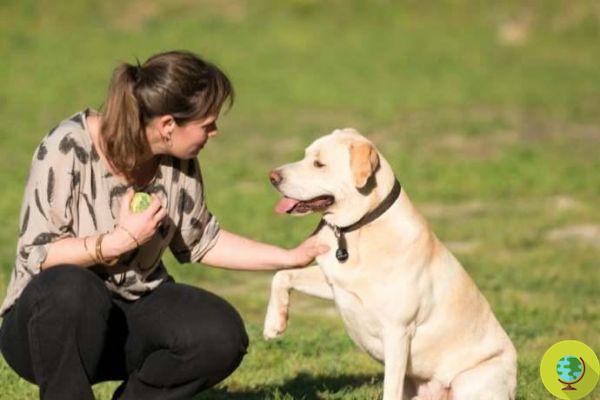
Here is Blat, the Spanish dog who smells lung cancer.
He is about to end up run over, his mother saves himThe dog can smell the presence of volatile organic compounds and have a tumor diagnosed in time
A cross between a labrador and a pit bull with a 110 out of smell that allows him to find malignant lung tumors. It is the story of Blat, a 4-year-old furry friend, able to smell the presence of suspicious lumps by smelling patient breath samples. And he does it with a very high degree of reliability.
That dogs have a prodigious nose is no secret, but in this dog's case, the olfactory abilities have led him to become the first dog in Spain to be trained to identify lung cancer.
Blat is now at the center of a study presented at the 2018 edition of the International Association for the Study of Lung Cancer's (IASLC's), the world conference on lung cancer underway in Toronto. Researcher Angela Guirao of the Hospital Clinic of Barcelona has in fact shown the results obtained by the dog, which would allow us to get very close to the possibility of diagnosing the development of a malignant tumor in advance thanks to the identification of volatile organic compounds called VOCs.
The cagnolone is not the first in this "specialty". Previously other four-legged friends have presented a very respectable curriculum, such as the German shepherd Liu or Frankie "used" to sniff out thyroid cancer.
In fact, dogs have been found to be very good at hearing in recent years VOC, ie those volatile organic compounds present in the case of cancer, a set of particles consider the "molecular signature" of lung cancer.
In the study, Blat was able to successfully recognize 27 patients with lung cancer (out of a total sample of 30 subjects) including three with malignant nodules. Dogs have about 300 million olfactory receptors (humans only 6), while the canine olfactory cortex occupies nearly 13% of the brain mass (only 1% in humans).
the same group of researchers had already shown how trained dogs can identify the presence of lung cancer, but the new study aimed to verify if they were also able to smell the presence of malignant nodules starting from exhaled gas samples with the patients breath.
Dogs, Guirao concludes, “change their behavior in the presence of various pathologies. Our theory is that lung cancer changes the nature of the volatile organic compounds (Vocs) exhaled by a subject and which can therefore be identified in the breath since these exhalations arrive directly from the diseased organ ".
Read also
- Dogs smell tumors: more effective than tests in diagnosing prostate cancer
- Tumor sniffing dogs to diagnose urine prostate cancer
Germana Carillo
cover photo


























